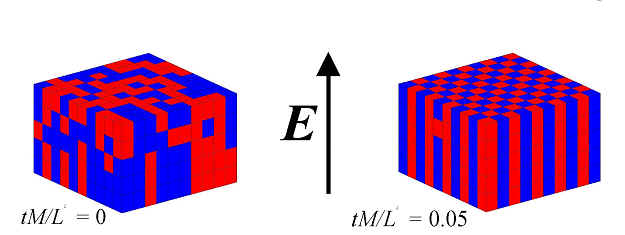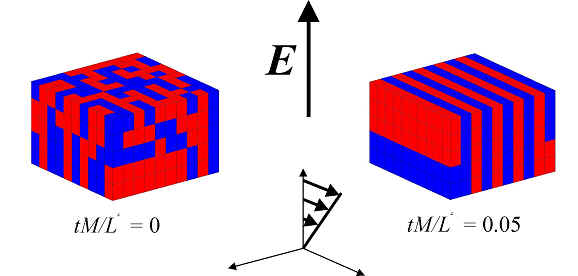Particle-level simulations are very useful for predicting macroscopic information about ER and MR fluids based on the information at the particle level. Unfortunately, these techniques are limited to relatively small numbers of particles (N<104), and thus are not appropriate for describing large systems like entire MR or ER devices (N>1010). This has motivated us to begin developing continuum models of these materials.
Here we are interested in describing particle migration in order
to model such experimentally-observed phenomena as column formation in quiescent
fluids and stripe formation in sheared fluids. The particle conservation
equation can be written
where f is the particle volume fraction, <u> is the suspension average velocity, and j is the flux of particles relative to the bulk fluid motion.
This flux can be related to the particle contribution to the stress, s(p), via
where a is the particle radius, hc is the liquid viscosity, and f(f) is the sedimentation hindrance function. The challenge is to correctly identify the particle contribution to the stress. Thus far, we have considered only electrostatic and hydrodynamic contributions to the stress (von Pfeil et al., PRL, 2002). However, this simple model can describe migration phenomena observed experimentally, as described below.
Column Formation
The model described above predicts that the application of an external field to a quiescent suspension will indeed cause the formation of particulate columns aligned with the applied field. This is illustrated in Figure 1 below, where the fluctuations in paerticle concentration about the average value are presented before and after the external field is applied.
The blue cubes represent positive fluctuations, and the red cubes represent negative fluctuations.
Stripe Formation in Shear Flow
In simple shear flow, this model predicts that the particle distribution will rearrange into concentrated stripes oriented in the flow direction, as commonly observed. This is illustrated below in Figure 2,
Current work focuses on predicting the rheological changes that occur as the stripe structures form and evolve.


